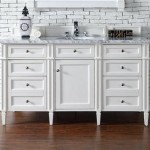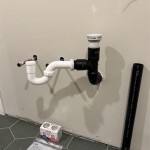Bathroom Cabinet Paint: A Comprehensive Guide
Bathroom cabinets, often exposed to humidity and fluctuating temperatures, require a robust and aesthetically pleasing finish. Selecting the appropriate paint for bathroom cabinets is crucial for both longevity and visual appeal. This article explores various paint types, surface preparation techniques, application methods, and preventative measures to ensure a durable and attractive finish that withstands the rigors of a bathroom environment.
Understanding Paint Types for Bathroom Cabinets
The market offers a diverse range of paint options, each possessing unique properties that influence its suitability for bathroom cabinet applications. Understanding the characteristics of each paint type is fundamental to making an informed decision that aligns with budgetary constraints, desired aesthetic, and performance requirements.
Latex Paint: Latex paint, also known as water-based paint, is a popular choice due to its ease of application, low odor, and quick drying time. Modern latex paints offer excellent durability and resistance to mildew, making them suitable for humid environments like bathrooms. They are also easier to clean up since they can be cleaned with water. However, less expensive versions of latex may not be as durable or scrubbable as other options.
Alkyd Paint: Alkyd paint, an oil-based option, is known for its hard, durable finish that resists chipping and scratching. It provides excellent adhesion and is particularly suitable for cabinets that experience frequent use. Alkyd paint offers a smooth, glossy finish that can enhance the overall aesthetic of the bathroom. However, it has a longer drying time compared to latex paint and requires mineral spirits for cleanup. It also emits a stronger odor during application and drying.
Acrylic Paint: Acrylic paint boasts excellent adhesion, durability, and water resistance, making it well-suited for bathroom applications. It forms a flexible film that resists cracking and peeling, even under fluctuating temperatures and humidity levels. Acrylic paints are available in a variety of sheens, from matte to high gloss, offering versatility in achieving the desired aesthetic. Similar to latex paints, cleanup is typically easier than with oil-based paints.
Epoxy Paint: Epoxy paint delivers exceptional durability and resistance to chemicals, moisture, and abrasion. Often used in industrial and commercial settings, it provides a tough, long-lasting finish for bathroom cabinets. Epoxy paint forms a hard, non-porous surface that is easy to clean and sanitize. However, it typically requires professional application due to its complex mixing and application process and often comes with a higher cost.
Furniture Paint: Furniture paint is specifically formulated for use on furniture and cabinetry. These paints often provide excellent leveling properties, resulting in a smooth, professional-looking finish. They are available in a wide range of colors and finishes, including chalk paint, milk paint, and enamel paint. Many furniture paints are designed to be easy to use and require minimal surface preparation.
When selecting a paint type, consider the existing cabinet material (wood, laminate, MDF), the desired level of durability, the ease of application, and the overall aesthetic you aim to achieve. Thoroughly research and compare different paint brands and formulations to ensure you choose a product that meets the specific needs of your bathroom.
Preparing Bathroom Cabinets for Painting
Proper surface preparation is paramount for achieving a professional and long-lasting paint finish on bathroom cabinets. Neglecting this critical step can lead to adhesion problems, uneven coverage, and premature paint failure. The preparation process involves cleaning, sanding, and priming the cabinets to create a smooth, receptive surface for the paint.
Cleaning: Begin by thoroughly cleaning the cabinets to remove all traces of dirt, grease, grime, and soap scum. Use a mild detergent or degreaser and warm water. For stubborn stains, a stronger cleaning solution may be necessary, but always test it in an inconspicuous area first to ensure it doesn't damage the cabinet finish. Rinse the cabinets thoroughly with clean water and allow them to dry completely before proceeding.
Removing Hardware: Remove all hardware, such as knobs, pulls, and hinges, from the cabinets. This will prevent paint from getting on the hardware and allow for a cleaner, more professional paint job. Store the hardware in a safe place to avoid losing any pieces. Consider labeling the hardware and corresponding cabinet doors and drawers to ensure easy reassembly.
Sanding: Sanding the cabinets is essential for creating a textured surface that promotes paint adhesion. Use a medium-grit sandpaper (120-180 grit) to lightly sand the entire surface of the cabinets. Focus on removing any existing imperfections, such as scratches, dents, or peeling paint. For cabinets with a high-gloss finish, sanding is particularly important to dull the surface and ensure proper paint bonding. After sanding, wipe down the cabinets with a tack cloth to remove all sanding dust. Ensure all dust is removed as remaining dust particles will result in an uneven paint finish.
Priming: Applying a primer is crucial for sealing the cabinet surface and providing a uniform base for the paint. A primer also helps to block stains and prevent bleed-through from the underlying wood. Choose a high-quality primer that is compatible with the type of paint you plan to use. Apply the primer in thin, even coats, following the manufacturer's instructions. Allow the primer to dry completely before proceeding to paint. For cabinets made of wood, a stain-blocking primer is recommended. For slick surfaces such as laminate, a bonding primer will aid in paint adhesion.
Repairing Imperfections: Before priming, inspect the cabinets for any imperfections, such as dents, cracks, or holes. Fill these imperfections with wood filler or spackle, following the manufacturer's instructions. Allow the filler to dry completely and then sand it smooth with fine-grit sandpaper. Wipe away any dust before priming.
By dedicating sufficient time and effort to surface preparation, you can significantly enhance the quality and longevity of your bathroom cabinet paint job.
Application Techniques and Best Practices
The application of paint to bathroom cabinets requires careful execution to achieve a smooth, even, and durable finish. Employing the correct techniques and adhering to best practices can significantly impact the final result. Factors such as brush and roller selection, paint application methods, and drying times all play a vital role.
Choosing the Right Tools: Select high-quality brushes, rollers, and paint sprayers designed for the type of paint you are using. For latex paints, synthetic brushes and rollers are recommended. For oil-based paints, natural bristle brushes are preferable. Use a small, angled brush for tight corners and detailed areas. A foam roller provides a smooth, even finish on flat surfaces. A paint sprayer can deliver a professional-looking finish, but it requires practice and proper ventilation.
Applying Thin Coats: Apply the paint in thin, even coats, avoiding drips, runs, and sags. Multiple thin coats are preferable to one thick coat, as they allow for better drying and adhesion. Allow each coat to dry completely before applying the next. Follow the manufacturer's recommended drying times for the specific paint you are using. Resist the urge to apply thick coats to speed up the process, as this can lead to uneven drying and a less durable finish.
Sanding Between Coats: Lightly sand the cabinets between coats of paint using fine-grit sandpaper (220-320 grit). This will help to smooth out any imperfections and create a surface that promotes better adhesion for the next coat. Wipe away any sanding dust with a tack cloth before applying the next coat of paint. This step is essential for achieving a professional-looking, smooth finish.
Maintaining Consistent Edges: Pay close attention to edges and corners to ensure consistent coverage. Use a brush to carefully paint these areas, avoiding buildup or drips. Consider using painter's tape to create clean, sharp lines. Remove the tape carefully after the paint has dried, pulling it away at a 45-degree angle.
Proper Ventilation: Ensure proper ventilation in the bathroom during painting and drying. Open windows and doors to allow fresh air to circulate. Use a fan to help speed up the drying process and reduce fumes. If using oil-based paint, wear a respirator to protect yourself from harmful vapors.
Curing Time: Allow the paint to fully cure, usually a period of several days or even weeks, before exposing the cabinets to heavy use or moisture. Curing is the process by which the paint hardens and reaches its full durability. Premature exposure to moisture can compromise the paint finish. Check the paint manufacturer's instructions for specific curing time recommendations
Cleaning Brushes and Rollers: Clean brushes and rollers immediately after use. For latex paints, use soap and water. For oil-based paints, use mineral spirits. Rinse thoroughly and allow the brushes and rollers to dry completely before storing them. Proper cleaning will extend the life of your painting tools and ensure they are ready for future projects.
By diligently following these application techniques and best practices, it is possible to achieve a professional-quality paint finish on your bathroom cabinets, enhancing their appearance and extending their lifespan.

I Painted Our Wooden Bathroom Vanity What Learned Diy Tips Before Afters

Painting A Bathroom Vanity Again

Diy Bathroom Cabinet Painting How To Quickly Accomplish Your Makeover

How To Paint Bathroom Cabinets Secrets For A Perfect Finish
.jpg?strip=all)
Painting A Bathroom Vanity Again Dream Green Diy

2024 Bathroom Cabinet Paint Colors J Bown Painting

15 Painted Bathroom Cabinets To Fit Any Style

Painted Bathroom Vanity One Room Challenge Week 3

Painted Kitchen Cabinets

Step By Guide How To Paint A Bathroom Vanity Cabinet Love Grows Wild
Related Posts







